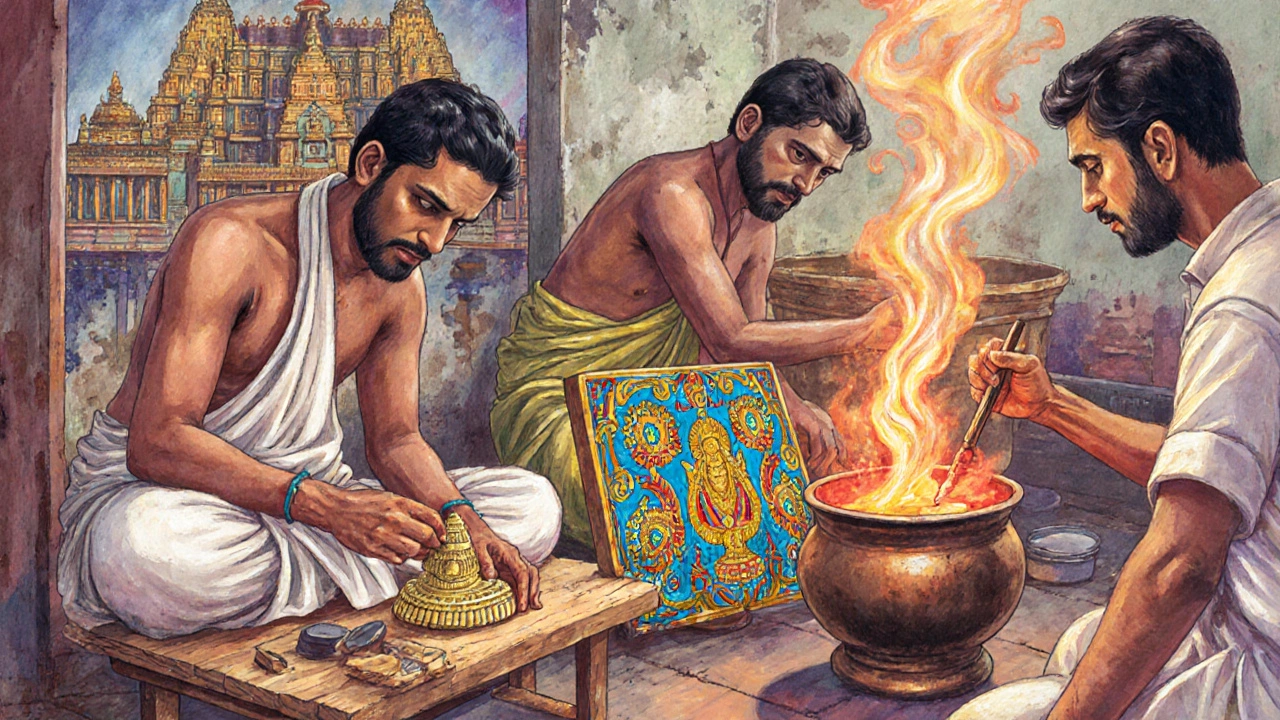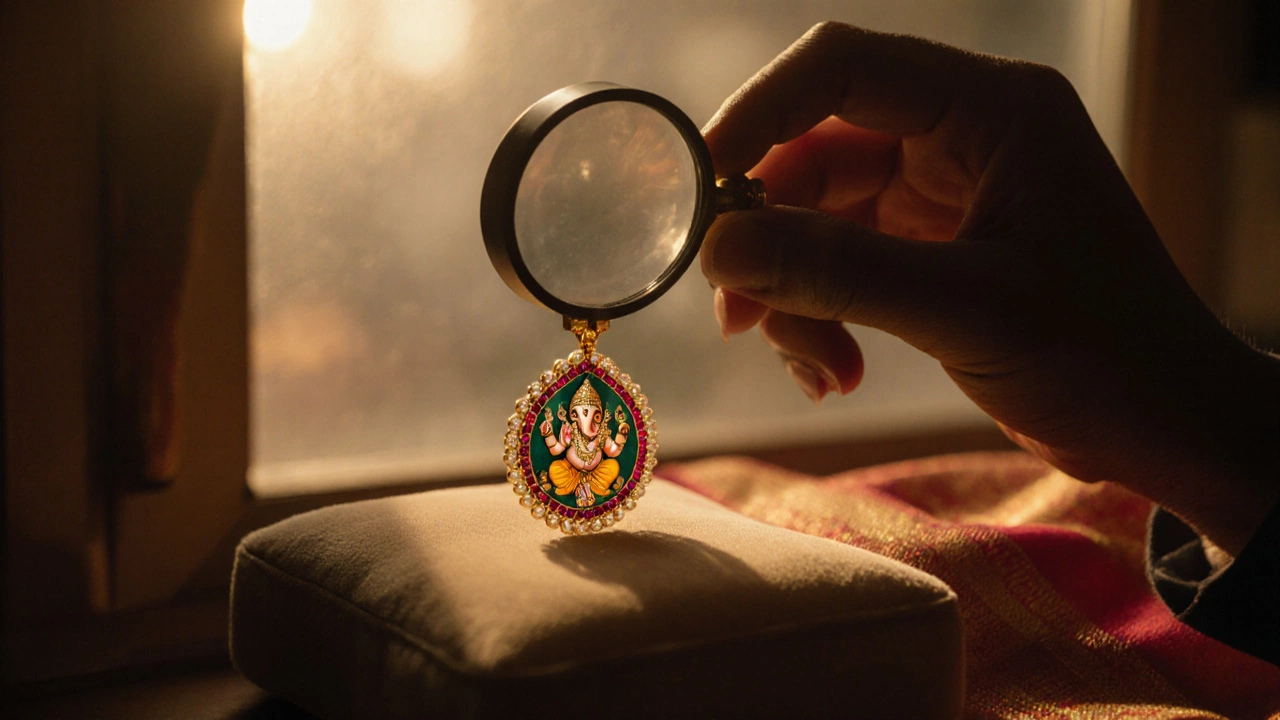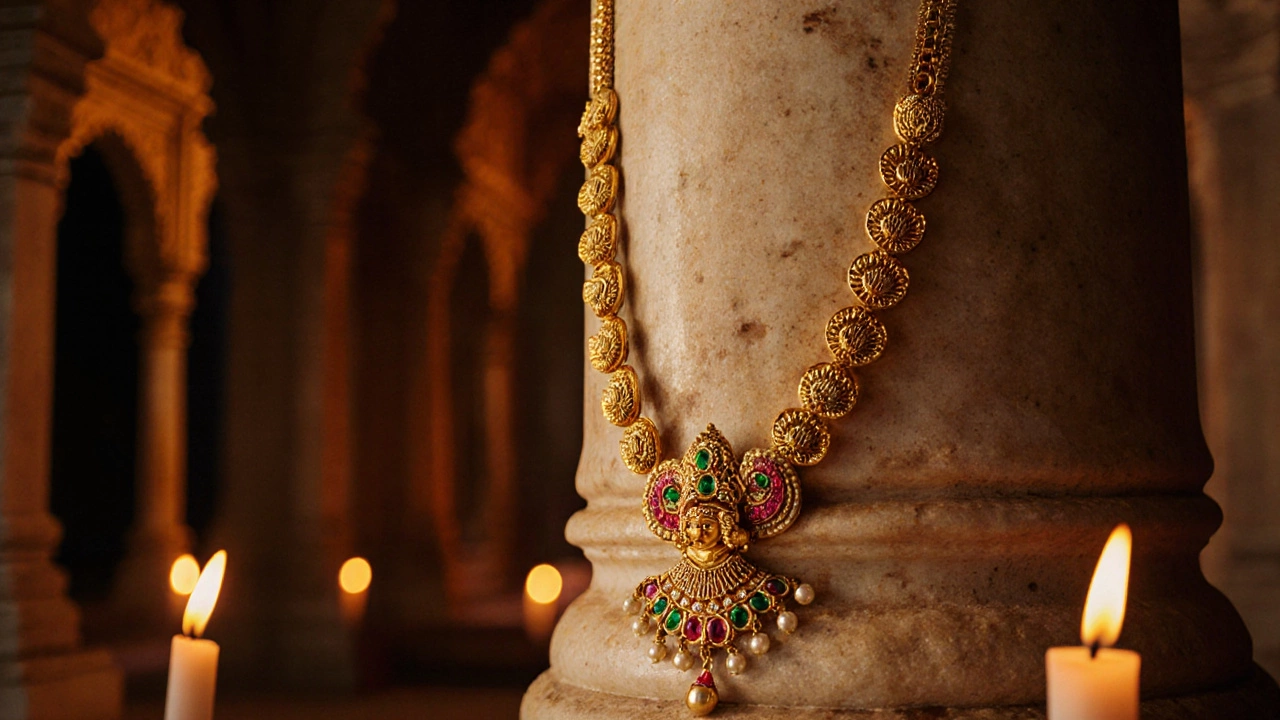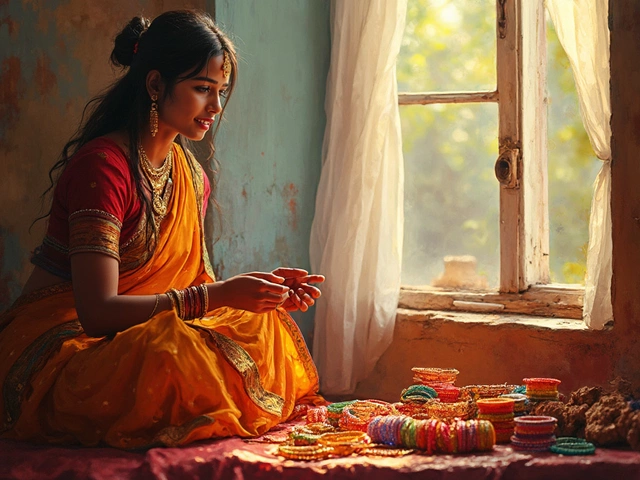Temple Gold Value Calculator
Compare Temple Gold vs Regular Gold
Calculate the exact cost difference based on current gold prices and temple gold's 15-30% premium.
Your Temple Gold Value
Base Gold Value
₹0.00
Temple Gold Premium
Total Temple Gold Value
₹0.00
Regular Gold Value
₹0.00
When you hear the term Temple gold is a distinct style of Indian gold jewellery crafted specifically for use in Hindu temples and sacred ceremonies, images of elaborately carved motifs and shining deities probably flash in your mind.
What Makes Temple Gold Different?
Unlike everyday gold pieces, Temple gold combines high purity gold with intricate religious iconography. The metal is usually 22‑24 karat, ensuring a rich, deep hue that catches candlelight in sanctums. Artisans embed miniature idols, divine symbols, and mythological scenes directly into the metal, a practice that dates back centuries.
Historical Roots
The tradition began in the Tamil Nadu and Karnataka regions during the Chola and Vijayanagara dynasties. Royal patrons commissioned large golden offerings for temples, believing that the shine of gold amplified divine blessings. Over time, local craftsmen refined techniques like Kundan a setting method where gemstones are glued onto a gold foil base and Meenakari enamel work that adds vibrant colors to gold surfaces, turning temple ornaments into miniature works of art.
Key Materials and Craftsmanship
Three core materials define authentic temple gold:
- Gold typically 22‑24 karat, selected for its malleability and lustre
- Gemstones often rubies, emeralds, and pearls that accentuate divine figures
- Enamel applied through Meenakari to create vivid backdrops
Skilled Artisans typically from generations of temple‑metalworking families use hand‑drawn sketches, then carve the design onto wax or clay molds. The molten gold is poured, chased, and polished by hand, a process that can take weeks for a single piece.

Common Motifs and Their Meanings
Each element carries symbolic weight:
- Auspicious symbols like the lotus, swastika, and conch shell represent purity, prosperity, and the divine call
- Depictions of deities such as Lord Shiva, Goddess Lakshmi, and Lord Ganesha serve as focal points for worship.
- Floral patterns echo the natural world, reinforcing the Hindu belief that divinity resides in all living things.
These motifs aren't merely decorative; they are intended to channel positive energy during puja and festivals.
Regional Variations
While South Indian temples dominate the narrative, other regions have their own twists:
- North India: Gold ornaments often feature heavier use of precious stones and a more robust silhouette, reflecting Mughal influences.
- East India (Bengal): Silver is occasionally blended with gold, and the designs favor delicate filigree work.
- West India (Gujarat): Bright enamel colors dominate, and the pieces are typically lighter, suited for daily temple rituals.
Buying Temple Gold: What to Look For
If you’re considering purchasing a piece, treat it like an investment in cultural heritage. Here’s a quick checklist:
- Verify Gold purity (22‑24 karat is standard for temple jewellery). Authentic pieces often carry a stamped hallmark.
- Inspect the craftsmanship. Hand‑chased edges, seamless enamel, and finely set gemstones indicate genuine work.
- Ask for provenance. Reputable sellers should provide a certificate detailing the temple of origin or the artisan’s lineage.
- Compare prices. Temple gold commands a premium-generally 15‑30% higher than equivalent weight of plain gold due to labor and cultural value.
- Consider future maintenance. Regular polishing and careful storage preserve the lustre and prevent enamel cracking.

Care and Maintenance
Temple gold is meant to last generations, but it still needs loving care:
- Store in a soft cloth pouch away from direct sunlight to protect enamel.
- Avoid harsh chemicals; clean with a mild soap solution and a soft brush.
- Schedule professional polishing every 2‑3 years, especially if the piece is used regularly in rituals.
Comparison: Temple Gold vs. Everyday Gold Jewellery
| Aspect | Temple Gold | Regular Gold Jewellery |
|---|---|---|
| Design Complexity | Highly intricate, often narrative | Simpler, often minimalist |
| Cultural Significance | Integral to worship and festivals | Primarily fashion or status |
| Typical Karat | 22‑24K | 14‑22K |
| Price per Gram | 15‑30% higher due to labor | Market rate |
| Typical Occasions | Puja, temple offering, weddings | Daily wear, parties, gifting |
Frequently Asked Questions
Is temple gold always 24 karat?
Most authentic pieces are 22‑24 karat; 24K is pure gold but too soft for intricate work, so many artisans opt for 22K, which balances purity and durability.
Can I wear temple gold as everyday jewellery?
Yes, but remember it carries sacred symbolism. Many families keep it for special occasions while storing it safely otherwise.
How do I verify the authenticity of a temple gold piece?
Look for hallmarks indicating karat and a maker’s stamp. Request a provenance certificate and, if possible, have the piece examined by a trusted jeweller familiar with temple jewellery.
What are the most common motifs?
Lotus, conch, swastika, and depictions of deities such as Shiva, Lakshmi, Ganesha, and Durga dominate temple gold designs.
Is temple gold a good investment?
Besides the intrinsic gold value, temple gold appreciates due to its rarity, craftsmanship, and cultural heritage, making it a solid long‑term asset.



